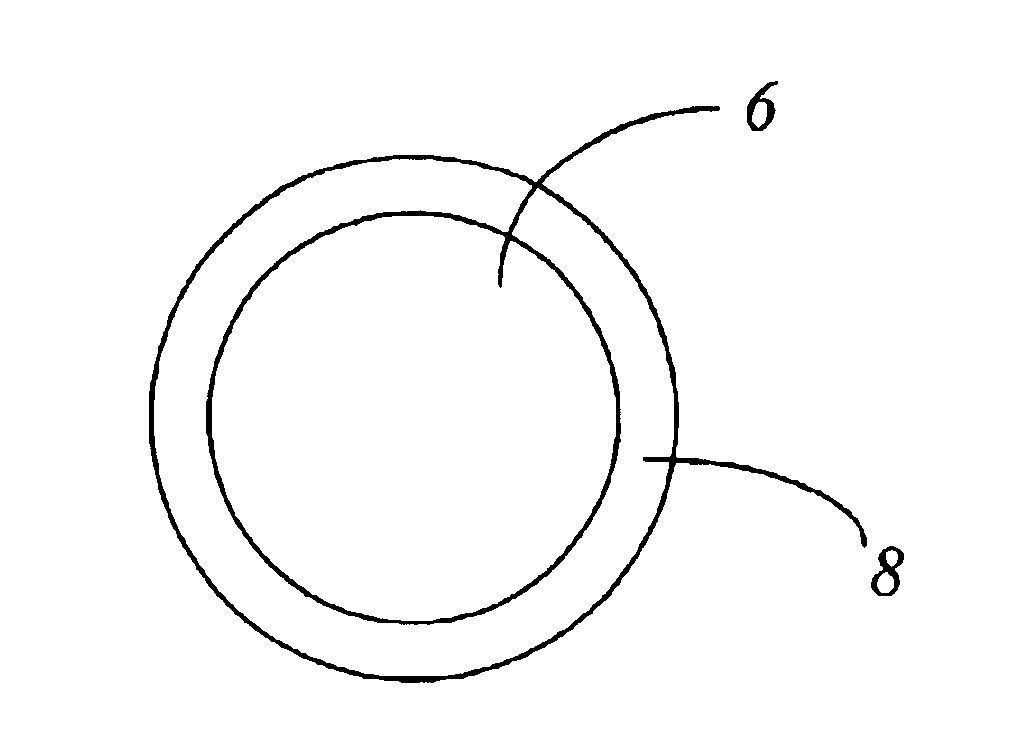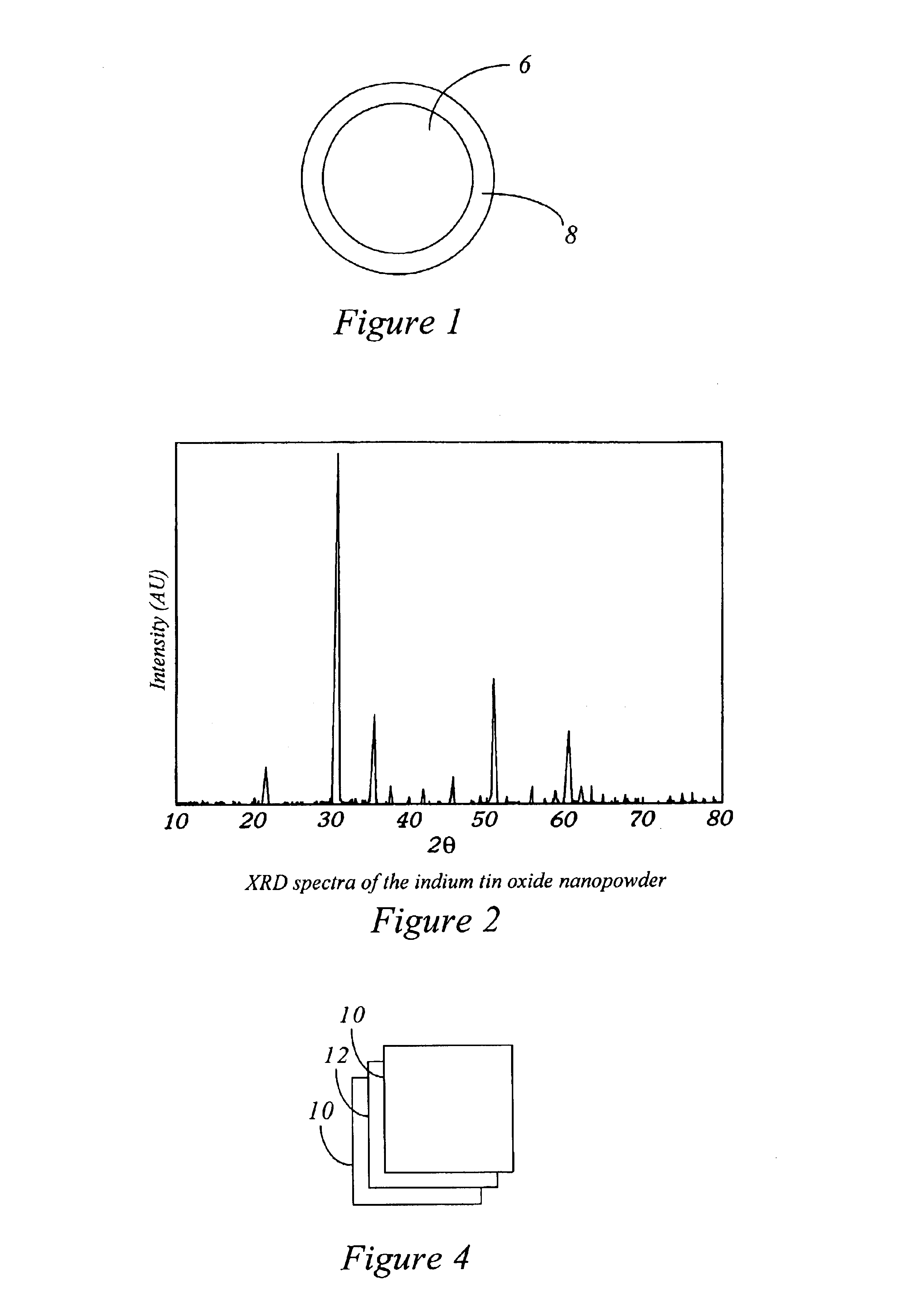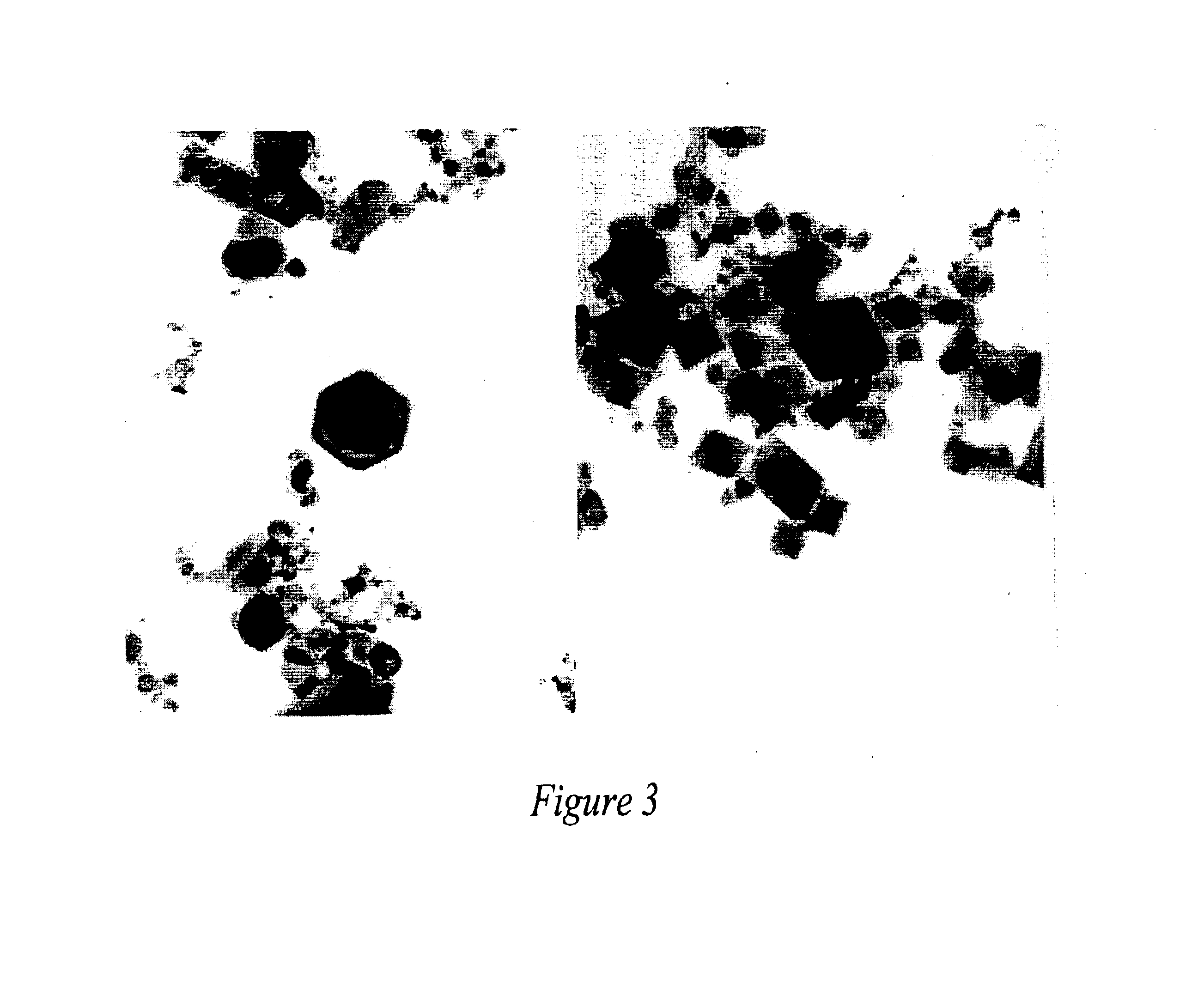Inorganic dopants, inks and related nanotechnology
a nanotechnology and organic dopant technology, applied in the field of non-stoichiometric substances, can solve the problems of difficult and uneconomical preparation and commercial application of stable non-stoichiometric forms of materials to useful applications, low cost pure phase materials are somewhat limited in the achievable range, and achieve high compressive toughness, reduce phase transformation temperature, and increase solute diffusion
- Summary
- Abstract
- Description
- Claims
- Application Information
AI Technical Summary
Benefits of technology
Problems solved by technology
Method used
Image
Examples
example 1
Indium Tin Oxide Fillers in PMMA
A stoichiometric (90 wt % ln203 in SnO2) indium tin oxide (ITO) nanopowder was produced using the methods of copending patent application Ser. No. 09 / 046,465. 50 g of indium shot was placed in 300 ml of glacial acetic acid and 10 ml of nitric acid. The combination, in a 1000 ml Erlenmeyer flask, was heated to reflux while stirring for 24 hours. At this point, 50 ml of HNO3 was added, and the mixture was heated and stirred overnight. The solution so produced was clear, with all of the indium metal dissolved into the solution, and had a total final volume of 318 ml. An equal volume (318 mL) of 1-octanol was added to the solution along with 600 mL ethyl alcohol in a 1000 mL HDPE bottle, and the resulting mixture was vigorously shaken. 11.25 ml of tetrabutyltin was then stirred into the solution to produce a clear indium / tin emulsion. When the resulting emulsion was burned in air, it produced a brilliant violet flame. A yellow nanopowder residue was colle...
example 2
Hafnium Carbide Fillers in PMMA
Nanoscale hafnium carbide filters were prepared as described in copending U.S. applications Ser. No. 08 / 706,819 and Ser. No. 08 / 707,341. The nanopowder surface area was 53.5 m2 / gm, and mean grain size was 16 nm. Micron scale hafnium carbide powder was purchased from Cerac (catalog number H-1004) for comparison.
Composite pellets were produced as described in Example 1, by mixing filler and polymer with a mortar and pestle and pressing in a hydraulic press. Pellets were produced containing either nanoscale or micron scale powder at three loadings: 20 vol % powder, and 50 vol % powder. The pellets were electroded as described above, and their resistivities were measured. (Because of the high resistances at the 20% loading, these pellets' resistivities were measured at 100V. The other pellets were measured at IV, as described in Example 1).
Results of these resistivity measurements are summarized in Table 1. As can be seen, the resistivity of the pellets di...
example 3
Copper Fillers in PMA and PVA
Nanoscale copper powders were produced as described in U.S. patent applications Ser. Nos. 08 / 706,819 and 08 / 707,341. The nanopower surface area was 28.1 m2 / gm, and mean grain size was 22 nm. Micron scale copper powder was purchased from Aldrich (catalog number 32645-3) for comparison.
The nanoscale and micron scale copper powders were each mixed at a loading of 20 vol % copper to 80 vol % PMMA and formed into pellets as described above. In addition, pellets having a loading of 15 vol % copper in poly(vinyl alcohol) (PVA) were produced by the same method. The pellets were electroded and resistivities measured at 1 volt as described in Example 1. Results are shown in Table 2.
TABLE 2Volume %Volume ResistivityAdditivePolymerfiller(ohm-cm) nanoscale copperPMMA205.68 × 1010nanoscale copperPVA154.59 × 105micron scale copperPMMA204.19 × 1012
It can be seen from Table 2 that the resistivity of the nanoscale copper powder / PMMA composite was substantially reduced com...
PUM
| Property | Measurement | Unit |
|---|---|---|
| domain size | aaaaa | aaaaa |
| domain size | aaaaa | aaaaa |
| transparency | aaaaa | aaaaa |
Abstract
Description
Claims
Application Information
 Login to View More
Login to View More - R&D
- Intellectual Property
- Life Sciences
- Materials
- Tech Scout
- Unparalleled Data Quality
- Higher Quality Content
- 60% Fewer Hallucinations
Browse by: Latest US Patents, China's latest patents, Technical Efficacy Thesaurus, Application Domain, Technology Topic, Popular Technical Reports.
© 2025 PatSnap. All rights reserved.Legal|Privacy policy|Modern Slavery Act Transparency Statement|Sitemap|About US| Contact US: help@patsnap.com



